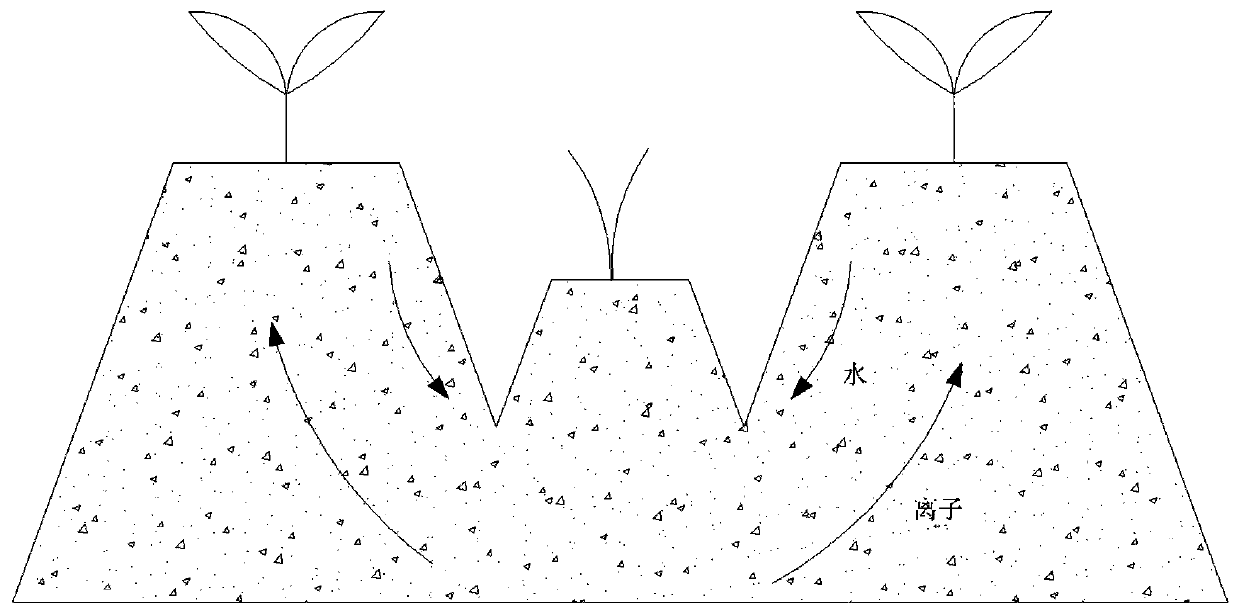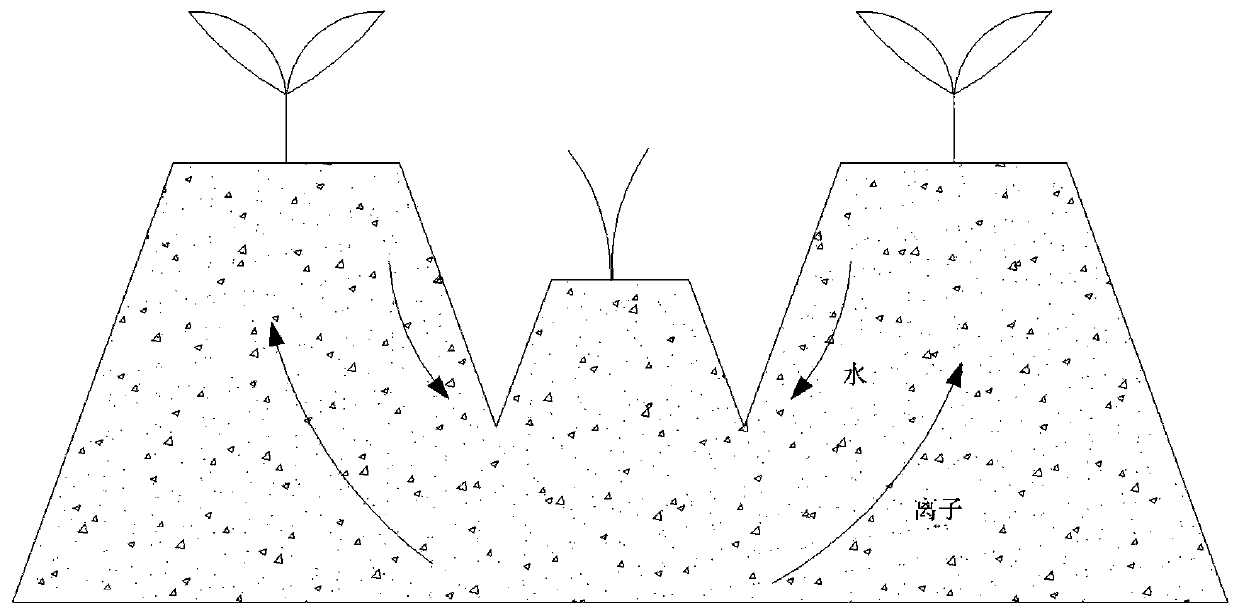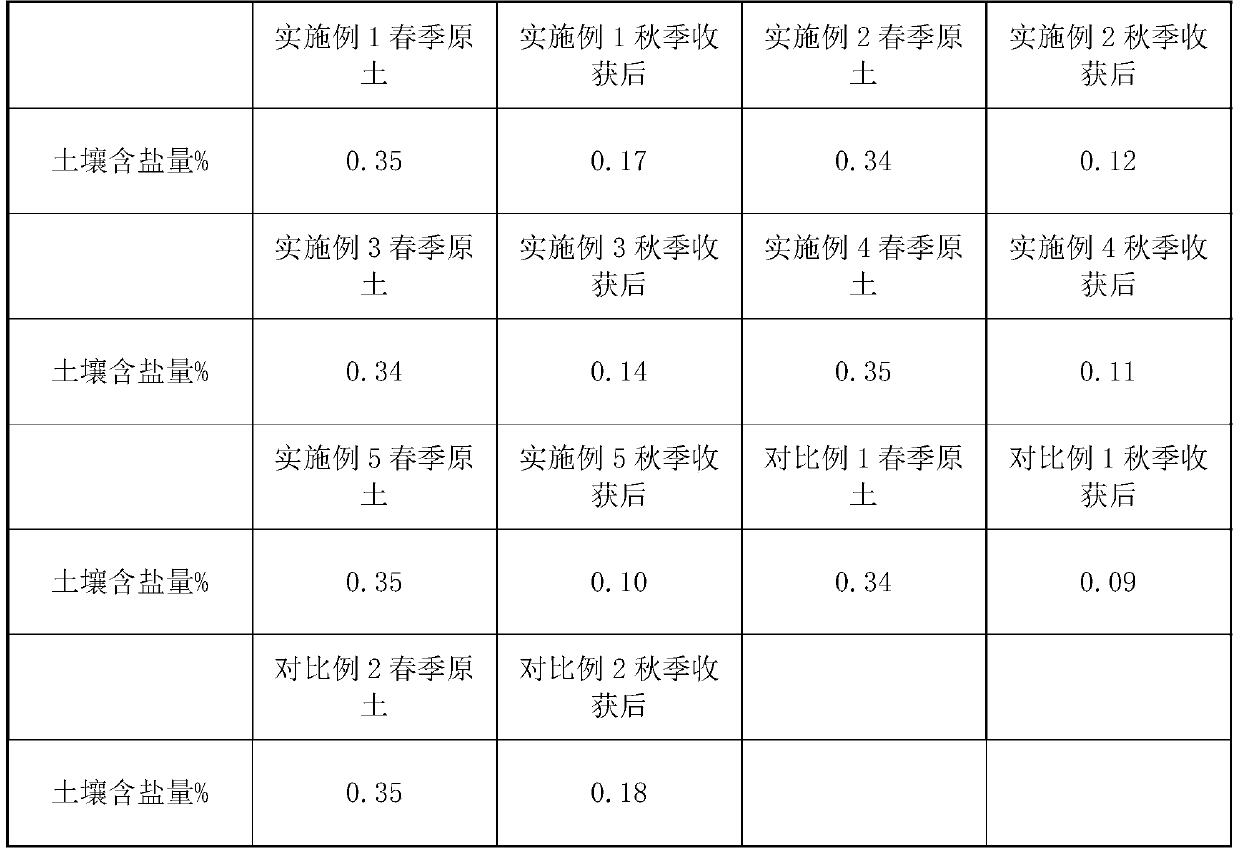Method for improving planting of plants in saline and alkaline land
A saline-alkali land and plant technology, which is applied in the field of plant planting improvement in saline-alkali land, can solve the problems of troublesome implementation, large engineering volume, and high cost, and achieve the effects of facilitating salt absorption, promoting growth, and promoting soil improvement
- Summary
- Abstract
- Description
- Claims
- Application Information
AI Technical Summary
Problems solved by technology
Method used
Image
Examples
Embodiment 1
[0023] (1) Add desulfurized gypsum to the saline-alkali land in winter from January to February for deep plowing and leveling of saline-alkali land; (2) The land is leveled in spring, with high and low ridges at alternating intervals; The center distance between high and low ridges is 10CM; (3) acidic compound fertilizer and fertilizer additives are applied to high ridges, and fertilizer auxiliaries include cellulose-based activated carbon; (4) humic acid fertilizer is applied to low ridges; (5) internal Every May, the ground temperature is raised to above 20°C to plant ice vegetables, with a plant spacing of 20-30 cm, and plant rushes in low ridges from April to May every year, with a plant spacing of 30-40 cm; The stems and leaves of the branches are harvested at the same time, the seeds are harvested in autumn and pulled out, and the rushes are harvested in autumn to take the stems. Further, the fertilizer additive in step (3) also includes one or both of zeolite or montmorill
Embodiment 2
[0025] (1) Add desulfurization gypsum in saline-alkali land in winter from January to February for deep plowing and leveling of saline-alkali land; (2) In spring, the land is leveled, with high and low ridges at alternating intervals; The center distance between high and low ridges is 20CM; (3) acidic compound fertilizer and fertilizer additives are applied to high ridges, and fertilizer auxiliaries include cellulose-based activated carbon; (4) humic acid fertilizer is applied to low ridges; (5) internal Every May, the ground temperature is raised to above 20°C to plant ice vegetables, with a plant spacing of 20-30 cm, and plant rushes in low ridges from April to May every year, with a plant spacing of 30-40 cm; The stems and leaves of the branches are harvested at the same time, the seeds are harvested in autumn and pulled out, and the rushes are harvested in autumn to take the stems. Further, the fertilizer additive in step (3) also includes one or both of zeolite or montmorill
Embodiment 3
[0027] (1) Add desulfurized gypsum to the saline-alkali land from January to February in winter for deep plowing and leveling of saline-alkali land; (2) The land is leveled in spring, with high and low ridges at alternating intervals; The center distance between the high and low ridges is 15CM; (3) acidic compound fertilizer and fertilizer additives are applied to the high ridges, and the fertilizer auxiliaries include cellulose-based activated carbon; (4) humic acid fertilizer is applied to the low ridges; (5) the internal Every May, the ground temperature is raised to above 20°C to plant ice vegetables, with a plant spacing of 20-30 cm, and plant rushes in low ridges from April to May every year, with a plant spacing of 30-40 cm; The stems and leaves of the branches are harvested at the same time, the seeds are harvested in autumn and pulled out, and the rushes are harvested in autumn to take the stems. Further, the fertilizer additive in step (3) also includes one or both of z
PUM
 Login to view more
Login to view more Abstract
Description
Claims
Application Information
 Login to view more
Login to view more - R&D Engineer
- R&D Manager
- IP Professional
- Industry Leading Data Capabilities
- Powerful AI technology
- Patent DNA Extraction
Browse by: Latest US Patents, China's latest patents, Technical Efficacy Thesaurus, Application Domain, Technology Topic.
© 2024 PatSnap. All rights reserved.Legal|Privacy policy|Modern Slavery Act Transparency Statement|Sitemap



